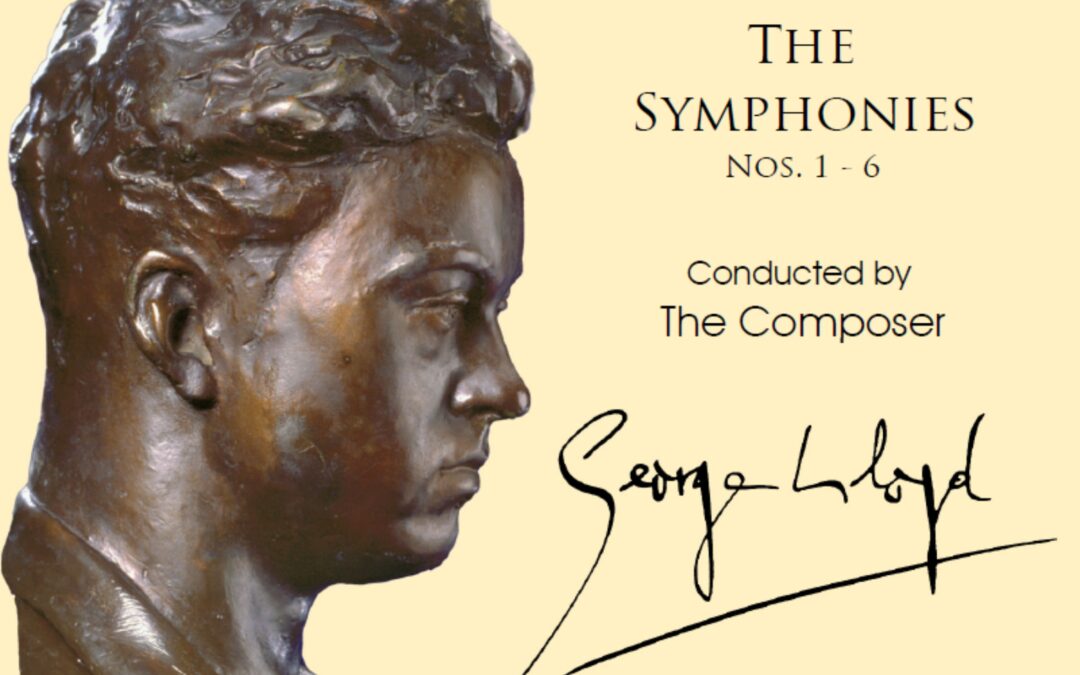Albany Symphony Orchestra
BBC Philharmonic Orchestra
George Lloyd conductor
LYRITA SRCD 2417 (four discs)
Lyrita has announced that George Lloyd’s complete recordings, formerly available on Albany Records, will be released in a new ‘Signature Edition’ during 2024. Clearly this is good news for devotees of this formerly disgracefully neglected composer, and here we have the first sample, 4CDs for a very reasonable £20. It is anticipated that a review of a second box, Symphonies 7-12, will follow in the next E-News.
Thus, your (not especially humble) reviewer has set upon quite an listening adventure which has had many expected and a few surprise, moments. I will sum up responses briefly first.
Symphonies 1-3 written in and around Lloyd’s 20th year
No I – a fine adumbration of the genius to come
Nos 2-3 – a bit disappointing
No 4 – a masterpiece
No 5 – almost a masterpiece but marginally less startling than no 4
No 6 – more concise than 4 and 5, but very worthwhile.
Nos 1-3 are evidence of a quite amazing burst of activity, an almost unbelievable outpouring of notes, written with style and confidence. However, I feel the composer was yet to discriminate the difference between what emerges as memorable material, and mere note-spinning with a lot of hustle and bustle.
My notes, penned while listening to nos. 2 and 3, include the words ‘noisy’, ‘brittle’, ‘trivial’. These disobliging words do not apply to no 1 which also has an early version of a typically memorable Lloyd ‘big’ tune. I do not know why the producers of this disc place no 2 before no 1, as the latter is much more engaging. No 2 does not end with a riotous rousing bang but with an underwhelming whimper. I do not know why.
Disc 2 also disappoints because of the second item, Charade ‘Scenes from the ‘60s’, which is supposedly satirical, take on memes from that era. Well, they say if you can remember anything from that period, you weren’t really there (at least, all the time) and nothing from hearing this suite remains in my memory except tedium and minor irritation.
As is fairly well-known Lloyd (1913-1998) had a difficult war, serving in the navy in the Arctic convoys. This led to severe PTSD (as they call it today) and recuperation was lengthy and arduous. But what then emerged was a composer of quite different stature than earlier, as evidenced by the 4th symphony. At 65 minutes this goes through a huge range of emotions, a lot of them ambiguous. I could claim I recognise a smooth blend of Sibelius, Shostakovich and Bliss, with a big personality in charge, but I do not know to what extent this is helpful. The finale, above all, celebrates the trouncing of adversity in all its forms. It is extremely exciting and tuneful, and I much enjoy the passage vaguely reminiscent of Sibelius’s ‘Lemminkäinen’s Return’. Interestingly, this symphony was Lloyd’s favourite.
Although almost equally as long as no. 4, no. 5 does not quite come up to this level of reward, nonetheless it is immensely worthwhile. Here, one cannot fail to notice the extraordinary power of the writing for brass. They really have a wonderful time throughout these recordings, but especially in this piece. Lloyd reduces the orchestra in different ways in the first three movements. I am not quite sure of the rationale for this practice, but then, in that annoying phrase, it just ‘is what it is’.
No 6 reverts to a much more modest size and all the familiar strengths of Lloyd’s invention are in evidence – especially the heartfelt melody of the central adagio.
I could not help noticing that the Albany Orchestra in nos. 1 and 4 sound with rather more bloom and resonance than the slightly stuffy atmosphere of the BBC studio recordings.
The excellent 24-page booklet notes by Paul Conway comprehensively detail Lloyd’s life, and he is consistently sympathetic to the music. He quotes Martin Anderson recalling, in 1993, that the BBC’s then Controller of Music, Robert Ponsonby (was) virtually complaining (my italics) that every time the corporation broadcast a Lloyd work, he was ‘submerged by letters from delighted listeners’. This is firm evidence, if you need it, of the bone-headed, cloth-eared, de haut en bas, call it what you will, attitude of the establishment to Lloyd’s work during the last recent half-century.
This meant that no 4, composed in 1946, had to wait until 1981 for a first performance. It seems that the only conductor who took an interest was Edward Downes whose performances of 4, 5 and 8, are firm favourites in my collection, and usefully complement these Albany issues.
You can download the full score of no 4 from georgelloyd.com, but you won’t want to print it off as it is 357 pages long.
Review by Geoffrey Atkinson

